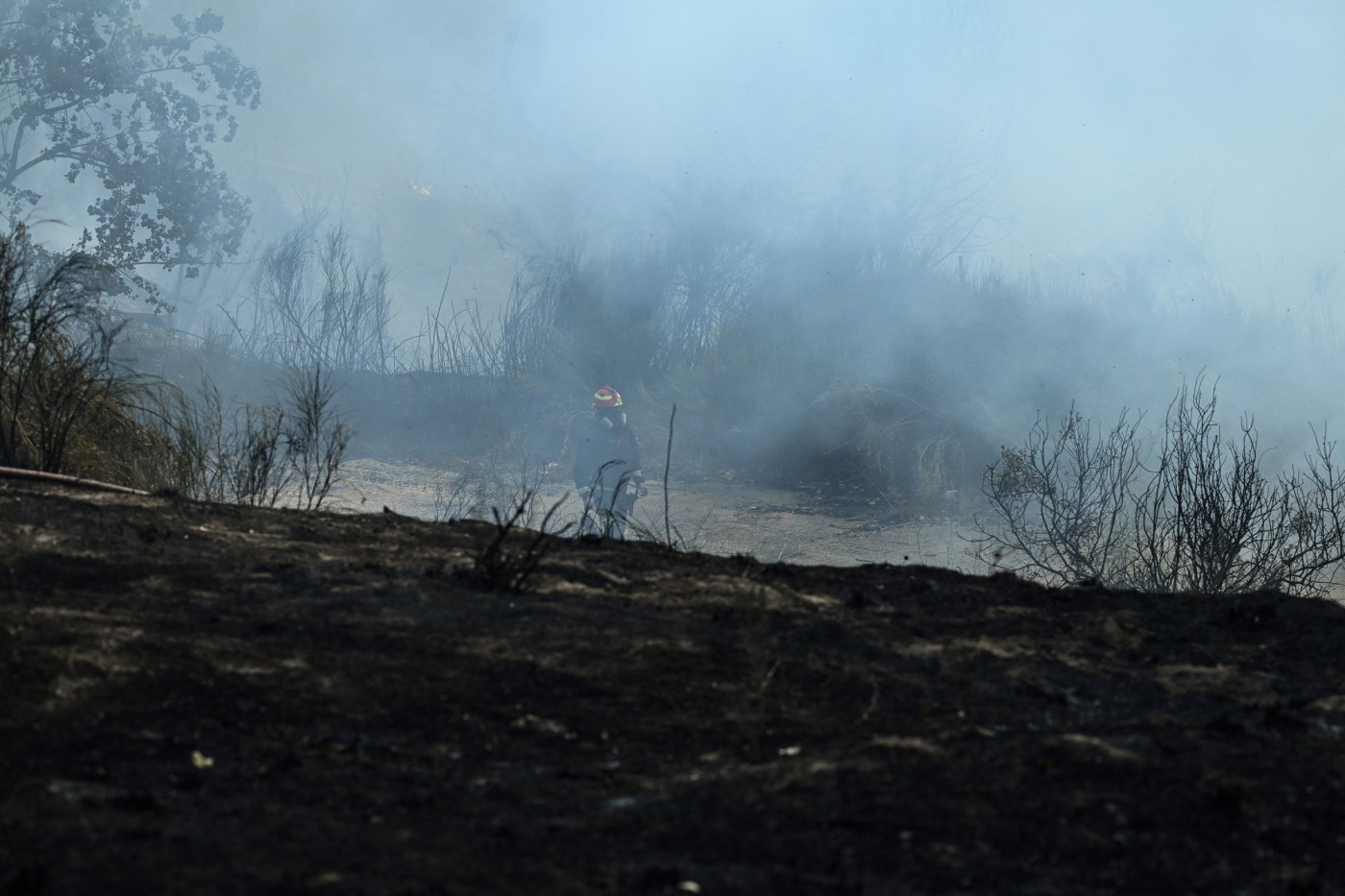ST. LOUIS — Scientists have long known the thick, billowing smoke clouds that wildfires launch into the atmosphere affect climate change.
Now, Washington University researchers have discovered how big a role some of those clouds play.
Wildfires generate vast plumes of smoke, which can reach the humid upper atmosphere, cool down and develop into clouds that can remain there for months, warming the air, drying out the earth and increasing the likelihood of another fire — especially bad news for a planet already getting hotter.
Related Articles
Crews unable to increase containment on Park Fire
From far and wide, crews across the US band together fighting Park Fire
Santa Cruz-based Joby aims to start commercial air taxi flights from late 2025
Opinion: California’s multibillion-dollar bet on hydrogen energy has downsides
2nd sizable earthquake in 24 hours shakes Kern County; 4.4 magnitude temblor strikes Wednesday near Grapevine
Not every wildfire will produce these smoky clouds, said Rajan Chakrabarty, senior author of the paper and professor in the department of Energy, Environmental & Chemical Engineering at Washington University. He said those that do tend to be “intense, burn a wide area and produce a lot of heat,” and their smoke reaches much higher into the atmosphere, which is how these clouds are formed. They don’t typically produce rain — only lightning.
The Washington University researchers have found that these smoke clouds, called pyrocumulonimbus clouds, contain particles of black carbon soot that absorb twice as much sunlight, therefore heat, than soot that comes from man-made fires. Researchers published their findings in the journal Nature Communications late last month.
Black carbon is one of the most potent short-lived climate warmers, and one of the building blocks for this atmospheric smoke. And with the number of pyrocumulonimbus clouds on the rise, climate scientists will need to start taking these tiny climate-changers into account accurately, said Payton Beeler, a post-doctoral researcher at Pacific Northwest National Laboratory and co-author of the study.
“I hope this work will improve the way that smoke is represented in climate models,” said Beeler.
Though unpredictable, these fires are becoming more common.
This century has already seen two recording-setting pyrocumulonimbus events, according to the study authors. One was in British Columbia in 2017, which created one of the largest plumes of smoke ever released, that we know of, into the stratosphere — where it stayed for eight months before dissipating.
In 2020 Australian bush fires resulted in an outbreak of 38 pyrocumulonimbus events over the course of just a few days, producing a plume triple the size of the Canada fire and remaining in the stratosphere for 15 months.
Last week, wildfires over Jasper National Park in Alberta, Canada, produced a pyrocumulonimbus cloud. It’s joined this week by California’s Park Fire — which has grown to 400,956 acres, the largest the state has seen in 2024, and its fourth largest in history — which has also resulted in one of these monstrous, smoke-fed storm clouds.
“The frequency of these events is increasing,” said Chakrabarty. “They are no longer a rare event, like volcanic eruptions are. Now, we see them pretty much every year.”
As wildfires become more common, scientists say understanding the impacts of black carbon in the atmosphere becomes increasingly critical.
Like a magnifying glass
In August 2019, scientists were studying a wildfire in Washington state when the smoke reached the height needed to become a pyrocumulonimbus cloud, or pyroCb event. They collected samples from onboard a NASA DC-8 research aircraft — described by Chakrabarty as a “flying laboratory” — darting in and out of the smoke cloud.
“We lucked out because we weren’t expecting this fire to turn into a pyroCb event,” said Chakrabarty. “They are very difficult to predict, much less get inside of to make observations.”
Examining their samples under a microscope, researchers found that black carbon in pyrocumulonimbus clouds had particularly thick outer coatings, made up of water vapor and organic matter burned by the flames. These coatings are transparent and work like a magnifying glass concentrating sunlight to create a “lensing effect.” The thicker the outer coating, the more intense the light absorption is, and the hotter a black carbon particle becomes.
In the magnifying glass scenario, as you increase the magnification power, the sunlight passing through the glass becomes more concentrated. However, the lensing effect for black carbon coatings has limits — a key study finding.
Once that upper limit is reached, more coating does not mean any additional light or heat gets retained by the black carbon. In the past, it’s been assumed that more coating means more heat — but the new finding changes that calculation in climate predictions, said Beeler.
“I think that black carbon absorption has probably been overestimated,” Beeler said, of previous climate models. If scientists have assumed more heat in the atmosphere is coming from black carbon than actually was, there are likely other particles that are playing a role in rising temperatures.
These additional culprits may require different approaches to try to either wash them out of the atmosphere, or to neutralize their warming effects — the next big challenge Chakrabarty’s lab plans to tackle.
“My question is can we engineer something as complicated and sophisticated as the climate? Do we have a good handle on what all we’ll find in the stratosphere?” Chakrabarty said.
(c)2024 the St. Louis Post-Dispatch. Visit the St. Louis Post-Dispatch at www.stltoday.com. Distributed by Tribune Content Agency, LLC.












